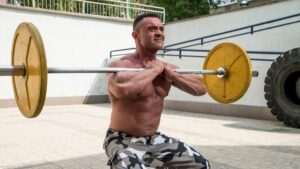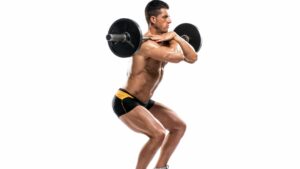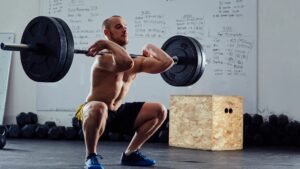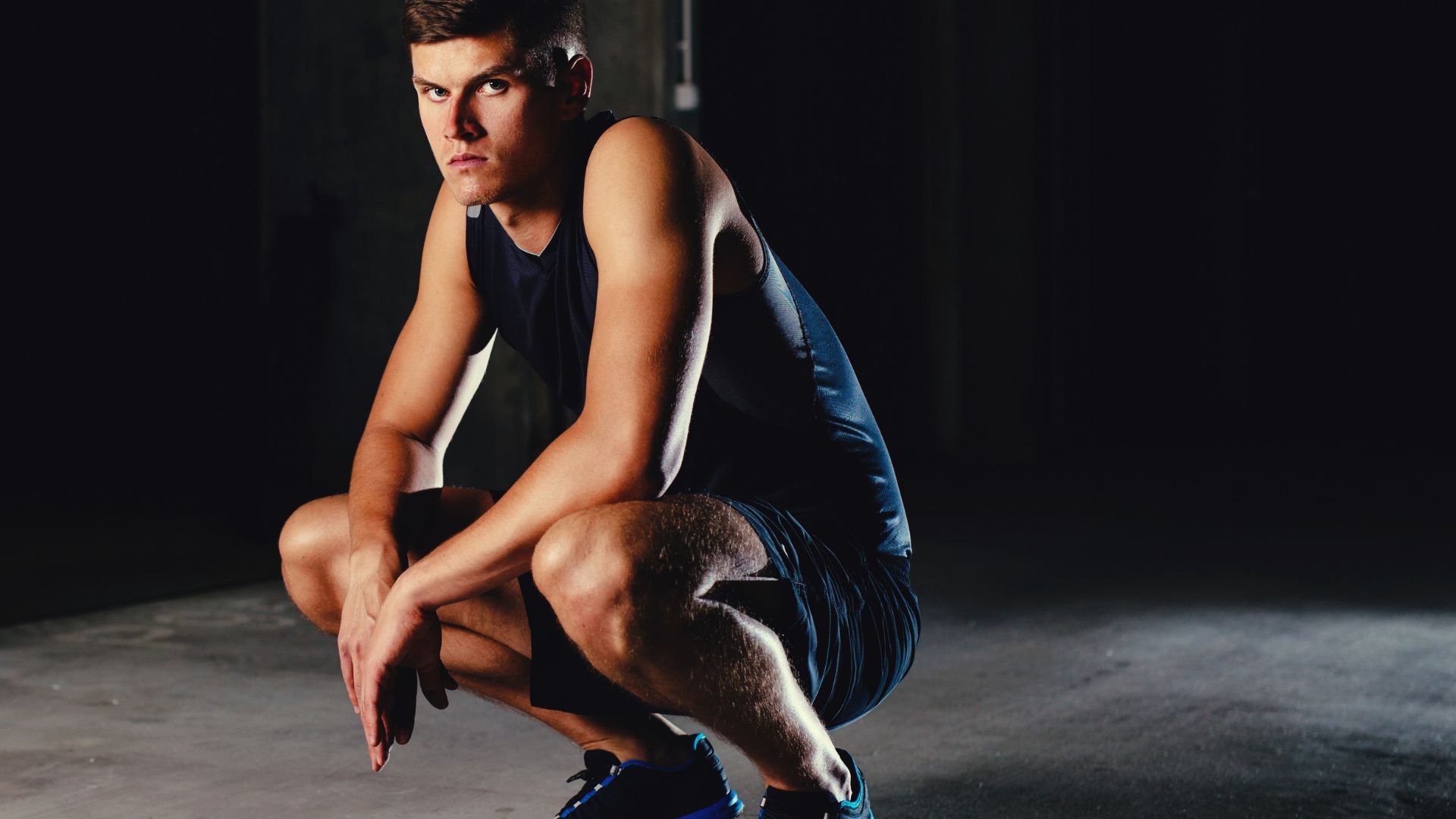Hey there! 🌟 fitness enthusiasts! Ever wondered about the benefits and potential pitfalls of shedding those workout clothes for your squat sessions? Well, you’re in the right place!
In this blog post, we’re going to dive into the intriguing topic of exercising without clothes, exploring the comfort, hygiene, safety, social norms, and legal aspects you need to consider.
So, whether you’re a seasoned gym-goer or just curious, let’s strip down the facts and uncover what’s beneath the surface of this fitness dilemma.
Understanding if to do the squat exercises without wearing clothes or not.
Exercising without wearing clothes is a personal choice and depends on your comfort level and the environment in which you are exercising. Here are some considerations to help you decide though:
Comfort: Some people find exercising without clothes more comfortable as it allows for greater freedom of movement and reduces the friction between clothing and the skin.
However, others may feel uncomfortable or exposed when not wearing clothes.
Hygiene: Sweat can accumulate on your skin during exercise, and clothing can help absorb and wick away moisture.
Exercising without clothes may require more frequent cleaning to maintain good hygiene.
Environment: Where you choose to exercise without clothes matters.
Doing so in a private setting like your home or a nudist facility where it’s socially accepted may be different from doing it in a public gym, where there may be specific rules and expectations about attire.
Safety: Some exercises, like squats, involve using weights or equipment. In such cases, wearing appropriate workout attire, including shoes, can help prevent injuries and provide support.
Social norms: Exercising without clothes in public spaces can be against social norms and may lead to discomfort or legal issues.
Ultimately, the decision to do squat exercise without clothes should be based on your personal preferences and the specific circumstances in which you are working out.
If you choose to do so, make sure you are in a safe and accepting environment, and consider hygiene and practicality. Always be mindful of the comfort and boundaries of those around you.

Further explanations
Let’s dive deeper and explain further the point mentioned here.
First, let’s delve deeper into the considerations of comfort and hygiene when it comes to exercising without clothes:
Comfort:
Freedom of Movement:
Exercising without clothes can offer a greater range of motion because there are no clothing restrictions.
This can be especially beneficial for exercises like squats, where proper form and a full range of motion are crucial.
Reduced Friction:
Clothing can sometimes cause friction against the skin, leading to discomfort, chafing, or skin irritation.
When you exercise without clothes, you eliminate this source of friction, potentially making the workout more comfortable.
Hygiene:
Sweat Absorption:
Clothing acts as a barrier that can absorb sweat and moisture from your skin.
This absorption helps in keeping your skin dry during a workout, reducing the likelihood of skin issues such as rashes or fungal infections.
Moisture Wicking:
Many workout clothes are designed with moisture-wicking properties, which means they draw sweat away from the skin’s surface and allow it to evaporate, keeping you feeling relatively dry and comfortable.
Cleaning:
Exercising without clothes can lead to direct contact between sweat and exercise equipment, potentially resulting in equipment that requires more frequent cleaning.

Additionally, you may need to shower or clean your body more thoroughly after a workout without clothes to maintain good hygiene.
In other words, squatting without clothes can provide enhanced comfort through increased freedom of movement and reduced friction.
However, it may come at the cost of potentially increased exposure to sweat, requiring more careful post-workout hygiene practices.
The choice largely depends on personal comfort preferences and the specific circumstances in which you are exercising, but maintaining good hygiene is essential regardless of your attire.
let’s delve into the considerations of environment and safety when it comes to exercising without clothes:
Environment.
Private Settings:
Exercising without clothes in a private setting, such as your home or a designated nudist facility, can be a matter of personal choice and comfort.
In these environments, social norms and expectations regarding attire may differ, and individuals typically have more control over their surroundings and the level of exposure they are comfortable with.
Public Gyms:
In contrast, exercising without clothes in a public gym or fitness center may pose challenges due to specific rules and expectations about attire.
Most gyms have dress codes that require members to wear appropriate workout attire for reasons related to hygiene, safety, and overall comfort for all gym-goers.
Exercising without clothes in such settings can violate these rules and may lead to discomfort or even removal from the facility.
Safety:
Exercise Equipment:
Many exercises, including squats, involve the use of weights or exercise equipment. Wearing appropriate workout attire, including shoes, is crucial for safety. Here’s why:
Footwear:
Proper athletic shoes provide stability, support, and traction when performing exercises that involve lifting weights or using equipment. For squats, in particular, shoes with a flat and non-slip sole can help maintain proper form and reduce the risk of slipping or injury.
Clothing:
Gym-appropriate clothing can help protect your skin from friction with equipment surfaces and minimize the risk of abrasions or cuts. It can also provide some level of cushioning when using weightlifting benches or machines.
Modesty and Safety:
Workout attire often provides modesty, preventing sensitive areas of the body from coming into direct contact with gym equipment. This can reduce the risk of injury or discomfort during exercises.
In the end, the decision to exercise without clothes should consider both the environment and safety factors.
Exercising without clothes may be acceptable in private settings that adhere to specific social norms, but in public gyms, it’s generally advisable to adhere to the facility’s dress code for the sake of hygiene, safety, and overall gym etiquette.
Wearing appropriate workout attire, including shoes, is important when using exercise equipment to reduce the risk of injuries and ensure a safe workout experience.
Let’s explore the considerations regarding social norms and the potential legal implications of exercising without clothes in public spaces:
Social Norms.
Cultural Differences:
Social norms regarding nudity and clothing vary widely across different cultures and regions. What may be considered acceptable in one place may be completely inappropriate or offensive in another.

Exercising without clothes in public spaces can be against the prevailing social norms in many places, leading to discomfort or shock among other people present.
Discomfort:
Exercising without clothes in public spaces can make others uncomfortable, especially if they did not expect or consent to be exposed to nudity.
This discomfort can affect the overall atmosphere and experience of the public space for everyone involved.
Legal Issues:
Indecent Exposure:
Exercising without clothes in public spaces may violate laws related to indecent exposure, which prohibit the deliberate exposure of one’s private parts in public.
Laws regarding indecent exposure vary from place to place, but violations can result in legal consequences, including fines or even criminal charges.
Public Nuisance:
In some jurisdictions, public nudity can be considered a public nuisance, as it may disturb or inconvenience others. Engaging in such behavior can lead to legal action.
Trespassing:
If you choose to exercise without clothes in private areas that are not designated for such activities, you could be charged with trespassing if you do not have permission to be there.
In summary, exercising without clothes in public spaces can be against social norms and may have legal implications, including potential charges related to indecent exposure or public nuisance.
It’s essential to be aware of and respect the cultural norms and legal regulations in the specific location where you intend to exercise and to consider the comfort and expectations of others in the vicinity.
It’s generally advisable to use designated facilities or private spaces when engaging in activities that involve nudity to avoid potential legal and social issues.
A concise tabular on this topic here.
Here’s a concise table summarizing the key considerations for doing the squat exercise without wearing clothes:
| Consideration | Exercising Without Clothes | Exercising with Clothes |
|---|---|---|
| Comfort | Some find it more comfortable due to freedom of movement and reduced friction. | Clothing may restrict movement and cause friction but provides modesty. |
| Hygiene | Direct skin contact with sweat may require more thorough post-workout cleaning. | Clothing can absorb sweat, helping to keep the skin relatively dry and reducing the need for immediate cleaning. |
| Environment | Acceptable in private or nudist settings but may violate dress codes in public gyms. | Generally follows gym dress codes in public spaces, promoting a consistent environment. |
| Safety (Equipment) | May increase the risk of injury when using weights or equipment due to lack of support and protection. | Provides support, stability, and protection when using weights or equipment, reducing the risk of injury. |
| Social Norms | Can be against social norms in many public spaces, potentially leading to discomfort or legal issues. | Typically aligns with social norms in public spaces, promoting a comfortable and respectful environment. |
Remember that the decision to exercise without clothes should be based on your personal comfort and the specific circumstances.
It’s essential to consider the environment, safety, and social norms, especially when using exercise equipment or exercising in public spaces.
Conclusion.
In conclusion, whether or not to do the squat exercise without wearing clothes is a personal choice that depends on individual comfort, the exercise environment, and safety considerations.
Exercising without clothes can offer greater freedom of movement and reduce friction but may require more thorough post-workout hygiene.
It’s generally acceptable in private or nudist settings but can violate dress codes in public gyms.
Safety concerns arise when using equipment, as appropriate workout attire provides support and protection.
Lastly, adherence to social norms and legal regulations in public spaces is crucial to avoid potential discomfort and legal issues.

Hey there, it’s Mike Rrsq, the Editor-in-Chief over at Jsquat.com, and I’m absolutely obsessed with all things squat fitness! I’ve been lucky enough to get some serious recognition for my work in this field. With a solid background in the fitness and wellness industry, I’ve been there right from the get-go, helping shape this website into what it is today.
You see, I’m not just the boss around here; I’m also a passionate contributor. I love sharing my insights through my articles, and trust me, they’re not your run-of-the-mill stuff. Each piece I write is a labor of love, filled with my expertise and real-world experience in the fitness universe. So, if you’re into fitness and looking for some inspiration, you’re in the right place!

